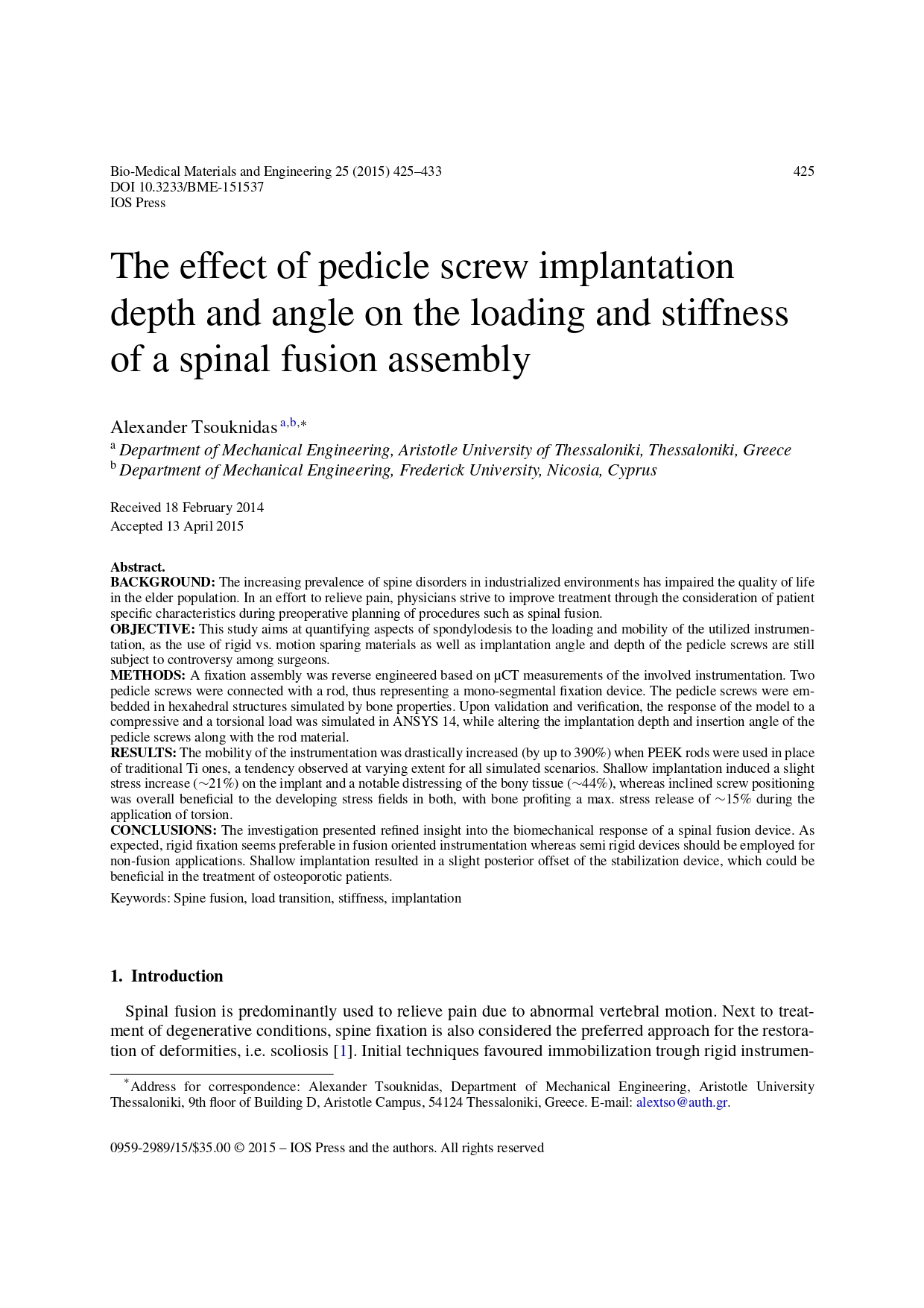Τitle
The effect of pedicle screw implantation depth and angle on the loading and stiffness of a spinal fusion assembly
The effect of pedicle screw implantation depth and angle on the loading and stiffness of a spinal fusion assembly
Bio-Medical Materials and Engineering, 25 (4), pp. 425-433.
BACKGROUND: The increasing prevalence of spine disorders in industrialized environments has impaired the quality of life in the elder population. In an effort to relieve pain, physicians strive to improve treatment through the consideration of patient specific characteristics during preoperative planning of procedures such as spinal fusion.
OBJECTIVE: This study aims at quantifying aspects of spondylodesis to the loading and mobility of the utilized instrumentation, as the use of rigid vs. motion sparing materials as well as implantation angle and depth of the pedicle screws are still subject to controversy among surgeons.
METHODS: A fixation assembly was reverse engineered based on μCT measurements of the involved instrumentation. Two pedicle screws were connected with a rod, thus representing a mono-segmental fixation device. The pedicle screws were embedded in hexahedral structures simulated by bone properties. Upon validation and verification, the response of the model to a compressive and a torsional load was simulated in ANSYS 14, while altering the implantation depth and insertion angle of the pedicle screws along with the rod material.
RESULTS: The mobility of the instrumentation was drastically increased (by up to 390%) when PEEK rods were used in place of traditional Ti ones, a tendency observed at varying extent for all simulated scenarios. Shallow implantation induced a slight stress increase (∼21%) on the implant and a notable distressing of the bony tissue (∼44%), whereas inclined screw positioning was overall beneficial to the developing stress fields in both, with bone profiting a max. stress release of ∼15% during the application of torsion.
CONCLUSIONS: The investigation presented refined insight into the biomechanical response of a spinal fusion device. As expected, rigid fixation seems preferable in fusion oriented instrumentation whereas semi rigid devices should be employed for non-fusion applications. Shallow implantation resulted in a slight posterior offset of the stabilization device, which could be beneficial in the treatment of osteoporotic patients.
